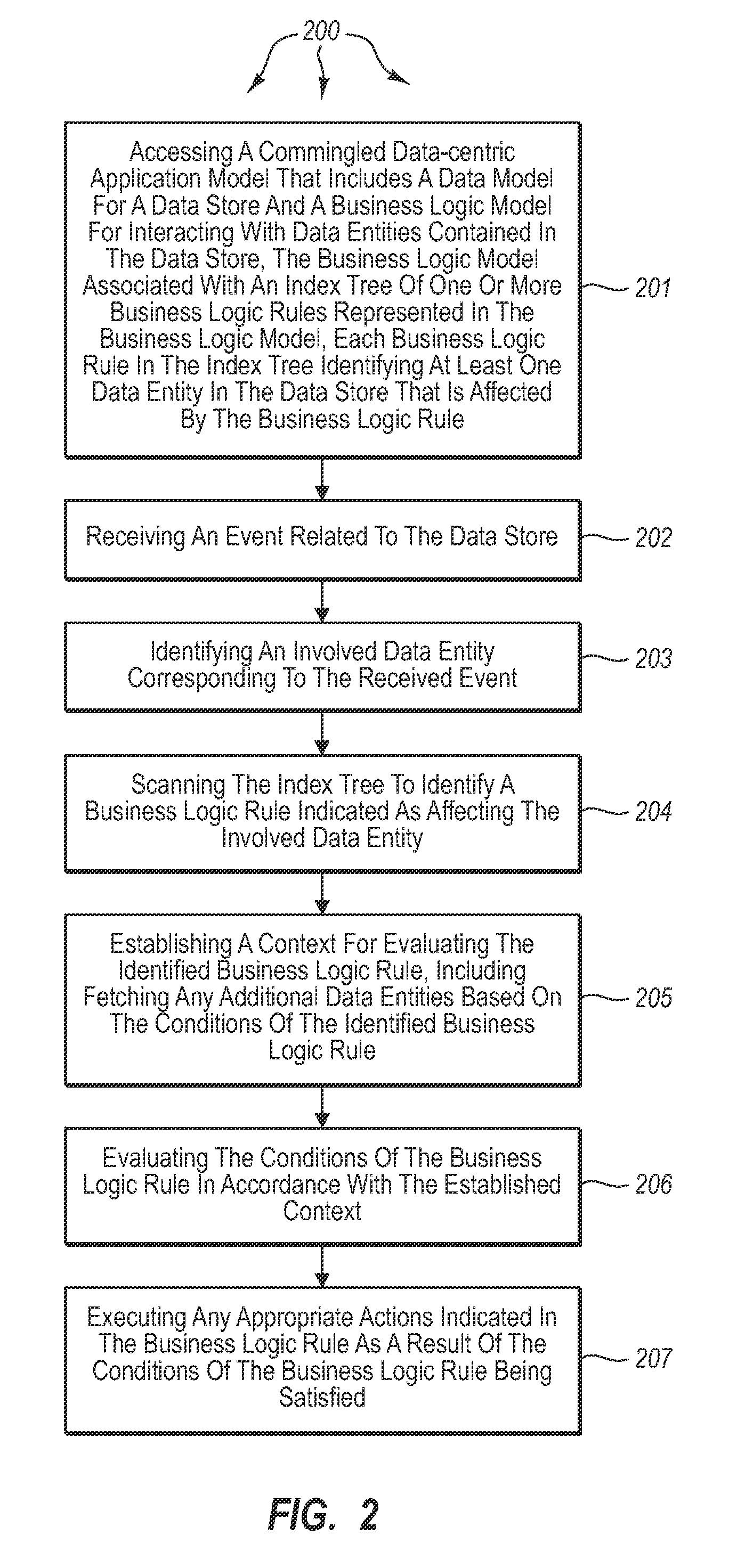Processing data-centric business models
a business model and data technology, applied in the field of processing data-centric business models, can solve the problems of requiring a great deal of time from an already busy it manager, and allowing users to create their own application extensions,
- Summary
- Abstract
- Description
- Claims
- Application Information
AI Technical Summary
Benefits of technology
Problems solved by technology
Method used
Image
Examples
Embodiment Construction
[0015]The present invention extends to methods, systems, and computer program products for processing data-centric business models. An execution engine accesses a commingled data-centric application model that includes a data model for a data store and a business logic model for interacting with data entities contained in the data store. The business logic model is associated with an index tree of one or more business logic rules represented in the business logic model. Each business logic rule in the index tree identifies at least one data entity in the data store that is affected by the business logic rule.
[0016]The execution engine receives an event related to the data store. The execution engine identifies an involved data entity corresponding to the received event. The execution engine scans the index tree to identify a business logic rule indicated as affecting the involved data entity.
[0017]The execution engine establishes a context for evaluating the identified business logi...
PUM
 Login to View More
Login to View More Abstract
Description
Claims
Application Information
 Login to View More
Login to View More - R&D
- Intellectual Property
- Life Sciences
- Materials
- Tech Scout
- Unparalleled Data Quality
- Higher Quality Content
- 60% Fewer Hallucinations
Browse by: Latest US Patents, China's latest patents, Technical Efficacy Thesaurus, Application Domain, Technology Topic, Popular Technical Reports.
© 2025 PatSnap. All rights reserved.Legal|Privacy policy|Modern Slavery Act Transparency Statement|Sitemap|About US| Contact US: help@patsnap.com



